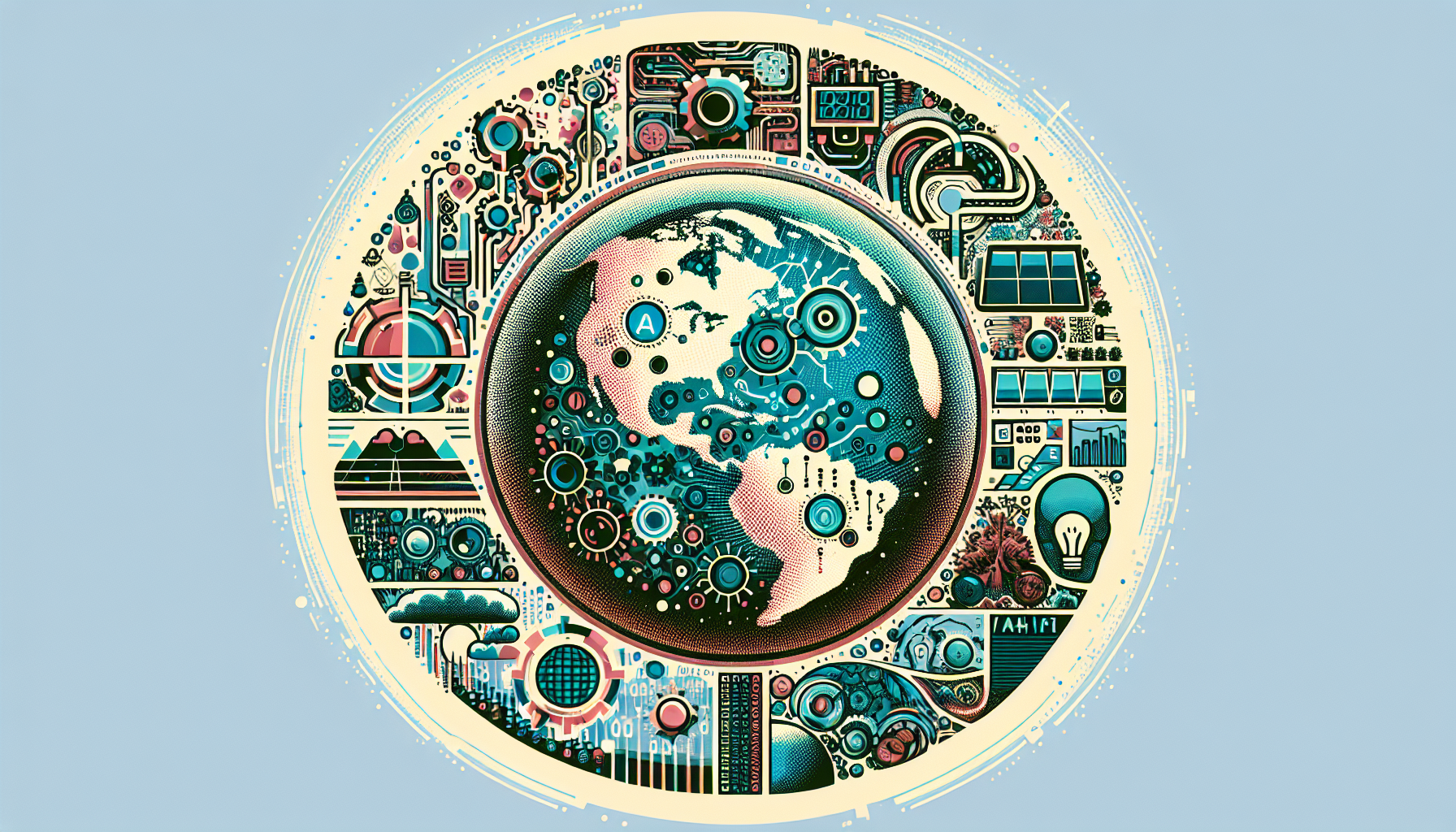In the ongoing battle against climate change, the fusion of Artificial Intelligence (AI) and climate modeling is emerging as a game changer. This powerful combination is reshaping how we understand, predict, and tackle climate-related changes. Let’s explore some of the groundbreaking initiatives and technologies leading this transformation.
NVIDIA’s Earth-2 Initiative
NVIDIA’s Earth-2 project stands as one of the boldest endeavors in climate modeling. It offers a digital twin cloud platform that uses AI, physical simulations, and computer graphics to visualize weather and climate on a global scale. Built on the NVIDIA Omniverse and the OpenUSD 3D framework, Earth-2 is set to revolutionize climate predictions by improving accuracy and speed, thus preparing us better for extreme weather events.
With its high-resolution simulations, Earth-2 allows meteorologists to forecast weather patterns with unmatched detail. The platform is designed to speed up analysis by up to 700,000 times and reduce energy consumption by 1,000 times, making it a vital tool for efficient climate modeling.
Advancements in Climate Models through AI
AI is dramatically enhancing the precision and predictive power of climate models. Techniques like generative adversarial networks (GANs) are refining these models by correcting local inconsistencies and improving spatial patterns. For example, AI can resolve common issues like the double-peaked Intertropical Convergence Zone, thus ensuring more trustworthy climate forecasts.
Generative AI models, including diffusion models infused with physics-based data, are also making waves in climate modeling. The Spherical DYffusion model, developed by the University of California San Diego and the Allen Institute for AI, can project a century of climate data in just 25 hours, a task that would traditionally take weeks. Running on GPU clusters, this model is more accessible and less costly than older supercomputer-based methods.
Earth System Digital Twins (ESDTs)
NASA’s Advanced Information Systems Technology (AIST) program is at the forefront of developing Earth System Digital Twins (ESDTs). These twins integrate diverse models of Earth and human activities, continuous observations, and advanced computing to offer a unified perspective of our planet’s systems, ranging from wildfires to climate change.
ESDTs comprise three core components: a dynamic digital replica of Earth’s systems, real-time or near-real-time forecasting capabilities, and impact assessment tools powered by machine learning. This setup allows researchers to predict future states and “what-if” scenarios with impressive accuracy, giving a clearer understanding of how different Earth systems interact.
Optimizing Renewable Energy and Carbon Capture
Beyond climate modeling, AI is making strides in renewable energy and carbon capture technologies. By analyzing real-time data, AI can optimize the deployment of solar panels and wind turbines, enhancing energy production and reducing our dependence on fossil fuels, thus speeding up the shift to clean energy.
AI is also advancing carbon emission capture and storage technologies. Researchers are using AI to create materials and methods that improve the efficiency and cost-effectiveness of capturing carbon emissions. AI analyzes large datasets to pinpoint ideal conditions for capturing and storing carbon, boosting the overall efficiency of these processes.
Global Collaboration and Impact
The use of AI in climate modeling is a global collaboration, with partnerships emerging worldwide. For instance, G42, an AI and cloud computing company based in Abu Dhabi, and NVIDIA are working together to improve weather forecasting accuracy on a global scale. Their partnership aims to create a weather forecasting model with square-kilometer resolution, aiding farmers, energy companies, and city planners in making informed, sustainable decisions.
The integration of AI into climate modeling marks a vital step forward in combating climate change. By improving the accuracy of climate simulations, optimizing renewable energy, and refining carbon capture technologies, AI offers essential tools to scientists, policymakers, and communities worldwide. With projects like NVIDIA’s Earth-2, NASA’s ESDTs, and cutting-edge AI models leading the way, we are on the brink of a new era where climate predictions are more reliable, and responses to climate challenges are more effective. As AI evolves, its role in fostering sustainable solutions and mitigating climate impacts will only deepen.

Leave a Reply